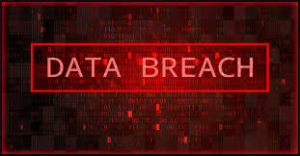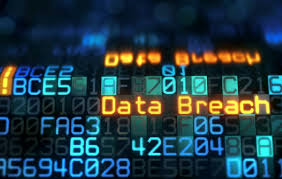In 2023, the Federal Trade Commission (FTC) revealed that fraud losses across the nation soared beyond $10 million, with a notable share attributed to financial fraud. As con artists continually refine their tactics, the urgency for effective fraud prevention strategies has never been more pressing.

As we delve into the realm of fraud detection within financial institutions, we’ll explore the myriad techniques employed by scammers to perpetrate their schemes. This comprehensive guide aims to illuminate not only the methods used to commit fraud but also the strategies available for its detection and mitigation, along with the repercussions it brings.
So, what exactly is bank fraud detection? The surge in digital technology and the prevalence of online banking transactions have given rise to increasingly sophisticated fraudulent activities. This evolution underscores the imperative for financial institutions to fortify their operations, ensuring the security of their transactions, systems, and most importantly, their customers. Bank fraud detection encompasses a systematic approach to identifying and monitoring any potentially dubious behavior in payment processes and banking dealings.
To effectively recognize bank fraud, one must grasp the various forms it can take. By pinpointing suspicious transactions, banks can safeguard their clients’ finances and protect their systems from potential losses. As we navigate through this complex landscape, understanding these different types of fraudulent activities becomes crucial in building a robust defense against them.
Join us on this journey as we uncover the intricacies of fraud detection in the financial world, arming ourselves with knowledge to combat the ever-evolving threats posed by fraudsters.
Understanding the Varieties of Bank Fraud: A Cautionary Tale
In the ever-evolving landscape of banking, where technology and human ingenuity intertwine, a darker side lurks in the shadows—bank fraud. To effectively combat this insidious threat, one must first delve into the various forms it takes, for knowledge is the first line of defense.

Imagine a bustling city where every day, new lives are woven into the fabric of society. Among these lives are those who seek to exploit the system—the fraudsters. One particularly cunning scheme is known as new account fraud. Picture this: an individual, masked behind a veil of anonymity, opens a bank account using stolen or fabricated information. They are not just robbers in the traditional sense; rather, they are artists of deception, crafting identities from thin air. With a stolen identity card in hand or the skill to forge documents, they manage to present themselves as legitimate customers. In this age of digital wizardry, cybercriminals employ advanced techniques—like image editing and deepfake technology—to circumvent the rigorous Know Your Customer (KYC) protocols designed to protect us all.
As we navigate further into this labyrinth of deceit, we encounter another alarming phenomenon: financial identity theft. This particular brand of fraud has woven itself deeply into the banking narrative, raising serious questions about security and trust. The question looms large: when did the protection against banking fraud become so critically compromised by the theft of personal identities? As those with malicious intent grow increasingly sophisticated in their methods, they find new ways to hijack individuals’ private information. With a few keystrokes, these criminals can gain access to a victim’s existing accounts or even create new ones under false pretenses, leading to unauthorized transactions and significant financial loss for unsuspecting victims.

In response to this rising tide of fraud, banks have taken up the mantle of guardianship, tirelessly enhancing their security measures to thwart these nefarious acts. Yet, this is not solely a battle for the banks; it is a collective struggle that calls for vigilance from each one of us. Customers are urged to be ever-watchful in safeguarding their personal information, as even the smallest oversight can open the door to these fraudulent schemes.
Thus, as we stand at the crossroads of innovation and deceit, it becomes clear that understanding the intricacies of bank fraud is crucial. It is not merely an academic exercise but a necessary step towards fortifying our defenses against those who seek to exploit our trust. In this ongoing saga between vigilance and deception, knowledge shines as our most potent weapon.
Money Laundering
In the shadowy realm of financial crime, one particularly insidious act stands out: money laundering. This illicit practice involves a sophisticated art of transforming money gained through illegal means into seemingly legitimate funds. It’s a convoluted dance of transactions that obscures the original source of the money, creating a tangled web that makes it increasingly challenging for law enforcement to trace the origins of these funds or uncover the criminal activities that spawned them.
The implications of money laundering extend far beyond mere financial deceit; it poses a significant threat to the very foundation of our financial systems. By enabling other nefarious activities—ranging from drug trafficking and terrorism financing to systemic corruption—it undermines public trust and stability. In response, governments and financial institutions around the globe have banded together, instituting rigorous regulatory frameworks. These measures include Know Your Customer (KYC) protocols, stringent anti-money laundering practices, and comprehensive transaction monitoring and reporting requirements to thwart this pervasive threat.

Synthetic Identity Fraud
As you delve into the intricate world of banking fraud detection, understanding synthetic identity fraud becomes essential. This cunning form of theft sees criminals fabricating entirely new identities by blending genuine personal information with invented details. The result? A deceptive profile that allows fraudsters to open new bank accounts or access existing ones undetected.
What makes synthetic identity fraud particularly alarming is its complexity. Unlike traditional identity theft that relies solely on stolen personal data, this method creates an entirely new persona. This clever ruse enables fraudsters to build up credit profiles gradually, effectively slipping under the radar of conventional fraud detection systems. The challenge lies in recognizing these synthetic identities before they can wreak havoc on the financial system.
Account Takeover Fraud: A Cautionary Tale
In the digital age, where our lives are increasingly intertwined with technology, the threat of account takeover fraud looms large. Picture a skilled hacker, lurking in the shadows of the internet, employing a variety of cunning tactics to infiltrate your personal accounts. Among their arsenal are spear phishing, social engineering, and malware—each a different strategy aimed at stealing your sensitive information.
Imagine receiving an email that appears legitimate, luring you into a trap where you unwittingly divulge crucial data. This is the essence of phishing; a deceptive game played by cybercriminals seeking to exploit your trust. Meanwhile, social engineering takes a more insidious approach, as these fraudsters manipulate individuals, coaxing them into revealing private information under false pretenses. And then there’s the silent menace of malware—malicious software that can stealthily capture your login credentials without your awareness. Once they have this access, these cybercriminals can seize control of your accounts and abscond with valuable customer data.

The Deceptive Dance of Loan Fraud
Now, let us delve into the shadowy realm of loan fraud. Here, we find deceitful individuals or organizations who deliberately submit false information in hopes of securing loans they have no intention of repaying. The signs are often subtle yet telling: forged documents, inflated income claims, and fictitious employment histories paint a picture of deception that can be hard to discern at first glance.
Fraudsters can also employ stolen identities to secure loans illicitly. They may go so far as to fabricate property appraisals, enabling them to borrow amounts far exceeding the true value of the asset. But that’s not all; lurking within this world of fraudulent finance are ghost loans—phantom entries in loan portfolios that serve only to inflate numbers while ultimately damaging credit reports when they come to light.
The Hidden Dangers of Payment Fraud
As we continue our exploration of fraud, we stumble upon payment fraud—a serious threat that manifests when unauthorized transactions occur using your financial details. This particular form of fraud doesn’t just lead to monetary loss; it jeopardizes your entire financial identity. Victims find themselves grappling with the fallout as their sensitive information is compromised, leading to fraudulent charges piling up on their accounts.

In response to this growing threat, banks have turned to sophisticated algorithms designed to monitor spending behaviors and detect anomalies. These protective measures help safeguard against suspicious activities, but they don’t stop there. Institutions have also adopted advanced security features like biometric verification and two-factor authentication, serving as formidable barriers against would-be intruders.
The Harrowing Reality of Physical Theft
Finally, we must confront one of the most prevalent forms of banking fraud: the physical theft of ATM cards. Each day, countless individuals fall victim to schemes orchestrated by fraudsters posing as bank representatives. With persuasive voices and calculated charm, they coax unsuspecting victims into revealing their ATM card numbers, PINs, and other sensitive details.
As we navigate this intricate web of deceit, it becomes clear that awareness and vigilance are our greatest allies in the fight against fraud. By understanding these tactics and remaining alert, we can fortify our defenses against those who seek to exploit us for their gain.
Six Practical Approaches to Detecting Banking Fraud
In the ever-evolving landscape of finance, the threat of banking fraud looms large. To safeguard against these insidious activities, it becomes imperative for banks to establish robust preventive measures and detection strategies. By doing so, financial institutions not only diminish the risk of unauthorized transactions but also bolster the overall security of their systems, ultimately protecting their clientele.

1. Embrace Trustworthy Fraud Detection Solutions
In the battle against fraud, banks have begun to harness the power of advanced technology. One effective method involves the integration of reliable, AI-driven identity verification systems. These sophisticated tools can analyze vast amounts of data, monitor transactions in real time, and employ intelligent algorithms to uncover trends and anomalies indicative of fraudulent behavior.
For instance, HyperVerge offers a dependable solution that leverages artificial intelligence to streamline fraud detection. This not only aids in identifying genuine threats but also minimizes the occurrence of false positives. As a result, bank employees can redirect their focus toward more impactful tasks, enhancing productivity and operational efficiency. The infusion of AI into fraud detection not only fortifies security measures but also fosters trust among customers who feel more secure in their banking interactions.
2. Leverage Biometric Verification Techniques
Another formidable weapon in the arsenal against banking fraud is biometric verification. This cutting-edge approach utilizes unique biological traits—such as fingerprints, iris scans, or facial recognition—to authenticate users accessing their accounts.

By weaving biometric technology into their security protocols, banks can drastically reduce the chances of unauthorized access and fraudulent activities. Unlike traditional methods like passwords or PINs, which are often vulnerable to theft or replication, biometric identifiers are inherently more secure. This heightened level of protection significantly mitigates risks associated with account takeovers and identity fraud, reinforcing the integrity of the banking system.
3. Conduct Thorough Document Verification
Among the various strategies employed to combat fraud, document verification stands out as a crucial component. During this process, bank staff meticulously examine customer documentation to ascertain its authenticity and detect any signs of tampering or forgery.
This thorough scrutiny not only safeguards against fraudulent actions but also ensures that only legitimate customers gain access to banking services. By implementing stringent document verification protocols, banks can create an additional layer of security that complements other fraud prevention measures.
As financial institutions continue to navigate the complexities of modern banking, these actionable strategies serve as essential tools in their ongoing quest to thwart fraudulent activities. Each approach contributes to a more secure environment, ultimately fostering a sense of safety and trust among customers who rely on their banks for financial stability.
The Importance of Document Verification
In the realm of banking, safeguarding against fraudulent activities is of paramount importance. One of the most effective strategies employed in this battle is document verification. Picture a scenario where bank staff meticulously scrutinize customer accounts alongside various identity documents—passports, driver’s licenses, and utility bills. This thorough examination is not just a routine task; it is an essential measure to uphold the integrity of financial transactions.
Imagine incorporating automated document verification into your system. This innovation enables swift and efficient checks on the authenticity of submitted documents, significantly reducing the chances of identity theft and fraud. By aligning customer information with reliable databases, banks can swiftly spot any discrepancies or inconsistencies that warrant further investigation. It’s like having an extra layer of security that fortifies the institution against potential threats.

Moreover, the process serves as a formidable barrier against fraudsters who attempt to forge or manipulate documents. With enhanced verification protocols in place, both the bank and its customers enjoy greater protection from potential financial turmoil. In essence, document verification acts as a vigilant guardian, ensuring that only legitimate transactions take place within the banking ecosystem.
Elevating Security with Face Authentication and Liveness Checks
To further bolster the defenses against fraud, banks can turn to the cutting-edge technology of facial authentication, complemented by liveness checks. This advanced method adds another dimension to existing fraud detection strategies. Imagine a sophisticated system that utilizes facial recognition technology while simultaneously confirming the user’s presence during the authentication process.

This innovative approach serves as a powerful deterrent against hacking attempts and fraudulent access. The liveness checks are designed to recognize subtle facial movements—such as blinking or shifting expressions—making it considerably more challenging for criminals to bypass security measures. It’s akin to having a vigilant sentinel watching over account access, ensuring that only genuine users gain entry.

By implementing this state-of-the-art biometric authentication technology, banks can significantly reduce opportunities for fraud and unauthorized access to sensitive financial systems. Not only does it enhance security, but it also streamlines user experience, making interactions with banking services seamless and hassle-free. In a world where security threats are ever-present, adopting such advanced measures is crucial in protecting both the institution and its clientele from potential risks.
5: The Vigilant Watcher of Transactions
In the ongoing war against the insidious threat of fraud, one strategy stands out as particularly effective: the establishment of a thorough transaction monitoring system. While this approach tends to be more reactive in nature, it wields remarkable power in uncovering instances of bank fraud. Imagine being an ever-watchful guardian over your financial transactions, keenly observing every movement within your bank account to catch any deceitful act before it spirals out of control. It is crucial to immediately alert your bank if you spot any questionable transactions that raise your suspicions.
A wise tactic is to activate alerts for significant withdrawals, odd spending behaviors, or transactions originating from areas known for high-risk activities. This preemptive measure places you a step ahead of potential fraudsters lurking in the shadows. In the realm of banking, advanced analytical tools and machine learning algorithms can sift through countless transactions, identifying anomalies that warrant further investigation. By embracing proactive monitoring, you not only safeguard your own finances but also uphold the trust of your customers, thwarting fraudulent activities before they have a chance to escalate into something more damaging.

6: The Power of Routine Review Audits
Engaging in regular review audits can serve as a robust shield against fraudulent behavior and bolster the overall security of your banking institution. By systematically examining financial transactions, account activities, and internal controls, you can proactively identify any unusual or suspicious patterns that may signal foul play.
These audits act as a magnifying glass, illuminating discrepancies that could hint at fraudulent activities, enabling swift countermeasures to mitigate risks. Furthermore, the practice of conducting frequent audits ensures that your bank’s security protocols remain current and comply with regulatory standards. To maximize the effectiveness of these reviews, it’s essential to establish a reliable auditing schedule and allocate resources wisely.
By committing to routine review audits, you can maintain vigilance against potential threats of bank fraud, ensuring your institution remains secure.

Customized Fraud Prevention Solutions for Financial Institutions
In an era where technology is advancing at breakneck speed, financial institutions find themselves at a critical juncture. The need to fortify defenses against fraud has never been more pressing. To stay one step ahead of increasingly sophisticated fraudsters, banks must embrace innovative tools designed for this very purpose. By adopting solutions like behavioral analytics, biometric authentication, artificial intelligence, and machine learning, institutions can bolster their fraud detection capabilities significantly.
Imagine a system that not only identifies suspicious behavior but also recognizes patterns and sends real-time alerts to halt fraudulent transactions before they escalate. This level of vigilance requires more than just basic security measures; it demands a commitment to continuous improvement and adaptation. By integrating AI and machine learning technologies, banks can develop a proactive defense mechanism that evolves in tandem with emerging fraud tactics, ensuring they remain resilient against new threats.
Secure browsing
When it comes to staying safe online, using a secure and private browser is crucial. Such a browser can help protect your personal information and keep you safe from cyber threats. One option that offers these features is the Maxthon Browser, which is available for free. It comes with built-in Adblock and anti-tracking software to enhance your browsing privacy.
Maxthon Browser is dedicated to providing a secure and private browsing experience for its users. With a strong focus on privacy and security, Maxthon employs strict measures to safeguard user data and online activities from potential threats. The browser utilises advanced encryption protocols to ensure that user information remains protected during internet sessions.

Maxthon private browser for online privacy
In addition, Maxthon implements features such as ad blockers, anti-tracking tools, and incognito mode to enhance the level of privacy for its users. By blocking unwanted ads and preventing tracking, the browser helps maintain a secure environment for online activities. Furthermore, the incognito mode enables users to browse the web without leaving any trace of their history or activity on the device.
Maxthon’s commitment to prioritising the privacy and security of its users is exemplified through regular updates and security enhancements. These updates are designed to address emerging vulnerabilities and ensure that the browser maintains its reputation as a safe and reliable option for those seeking a private browsing experience. Overall, Maxthon Browser offers a comprehensive set of tools and features aimed at delivering a secure and private browsing experience.
Maxthon Browser, a free web browser, offers users a secure and private browsing experience with its built-in Adblock and anti-tracking software. These features help to protect users from intrusive ads and prevent websites from tracking their online activities. The browser’s Adblock functionality blocks annoying pop-ups and banners, allowing for an uninterrupted browsing session. Additionally, the anti-tracking software safeguards user privacy by preventing websites from collecting personal data without consent.
By utilising Maxthon Browser, users can browse the internet confidently, knowing that their online activities are shielded from prying eyes. The integrated security features alleviate concerns about potential privacy breaches and ensure a safer browsing environment. Furthermore, the browser’s user-friendly interface makes it easy for individuals to customise their privacy settings according to their preferences.
Maxthon Browser not only delivers a seamless browsing experience but also prioritises the privacy and security of its users through its efficient ad-blocking and anti-tracking capabilities. With these protective measures in place, users can enjoy the internet while feeling reassured about their online privacy.
In addition, the desktop version of Maxthon Browser works seamlessly with their VPN, providing an extra layer of security. By using this browser, you can minimise the risk of encountering online threats and enjoy a safer internet experience. With its combination of security features, Maxthon Browser aims to provide users with peace of mind while they browse.
Maxthon Browser stands out as a reliable choice for users who prioritise privacy and security. With its robust encryption measures and extensive privacy settings, it offers a secure browsing experience that gives peace of mind to its users. The browser’s commitment to protecting user data and preventing unauthorised access sets it apart in the competitive market of web browsers.
By choosing Maxthon Browser, users can feel confident that their online activities are safeguarded from potential threats and invasions of privacy. In an age where digital security is more important than ever, opting for a browser like Maxthon is a proactive step towards ensuring a safer online experience. Embrace the reassurance of secure browsing with Maxthon Browser today!
